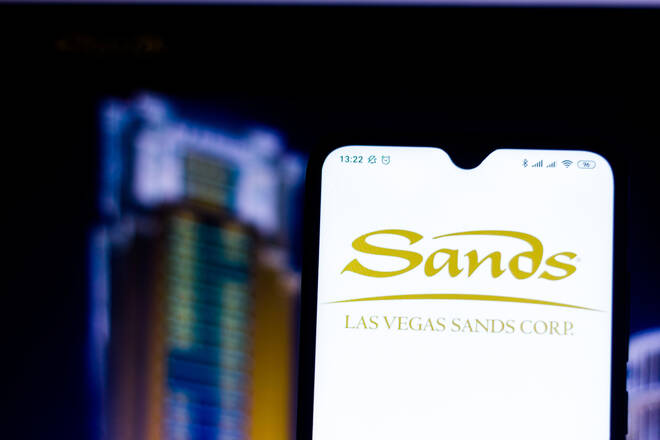Advertisement
Advertisement
Las Vegas Sands Looks Overpriced Ahead Of Earnings
By:
Las Vegas Sands reports earnings on Wednesday after a quarter of dismal Macao and Las Vegas reopening statistics.
In this article:
Macao and Las Vegas resort operator Las Vegas Sands Inc. (LVS) reports Q2 2020 earnings after the U.S. closing bell on Wednesday, with analysts expecting a $0.73 loss on $549.0 million in revenue. That would mark a stomach-churning 80% year-over-year decline as a result of historic headwinds, driven by the worldwide pandemic. Companies with Macao exposure have been hit harder than domestic-only operations so far in 2020 because the Wuhan outbreak impacted the sector well before COVID-19 struck the United States and Europe.
Las Vegas Sands Vulnerable To Downside Surprise
65% of company revenue is booked through Macao while Las Vegas operations comprise just 12% of revenues. Both venues have reopened but Las Vegas traffic has been hurt badly by the resurgence in Nevada COVID-19 infections, with daily positives hitting an all-time high just last week. Given the adverse environment, current consensus may be understating the negative impact to second quarter earnings, raising the potential for a downside surprise.
Las Vegas Sands CEO Sheldon G. Adelson commented about reopening efforts following shutdowns in Macao, Las Vegas, and other key properties, noting “I remain extremely bullish about the future of our company and its growth prospects. We operate best-in-class properties in the leading markets in our industry and we are currently executing significant investment programs in both Macao and Singapore to create meaningful new growth from our existing portfolio”.
Wall Street And Technical Outlook
Wall Street currently rates Las Vegas Sands as a ‘Strong Buy’, based upon 9 ‘Buy’ and 3 ‘Hold’ recommendations. No analysts are recommending that shareholders close out positions at this time. Price targets range from a low of $48 to a street high $67 while the stock is now trading within a few cents of the low target. All in all, these ratings look over-optimistic, failing to account for growing infections and the likelihood of a second wave in China this winter.
The stock topped out in 2018 at a 4-year high in the 80s and sold off into the upper 40s in 2019. It broke that trading floor in the first quarter of 2020 and dropped to the lowest low since 2010, highlighting extensive technical damage. A bounce into June stalled at the broken 2019 support, yielding nearly 7 weeks of sideways action that’s failed to mount the formidable barrier. As a result, it’s the price level to watch if tonight’s earnings generate a ‘buy-the-news’ reaction.
About the Author
Alan Farleyauthor
Alan Farley is the best-selling author of ‘The Master Swing Trader’ and market professional since the 1990s, with expertise in balance sheets, technical analysis, price action (tape reading), and broker performance.
Did you find this article useful?
Latest news and analysis
Advertisement
